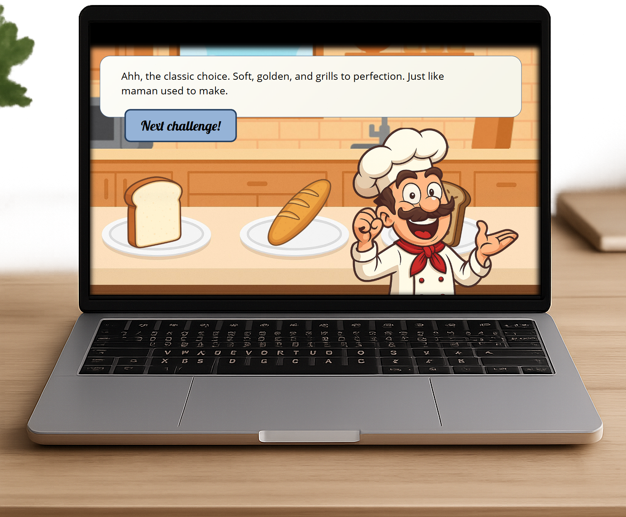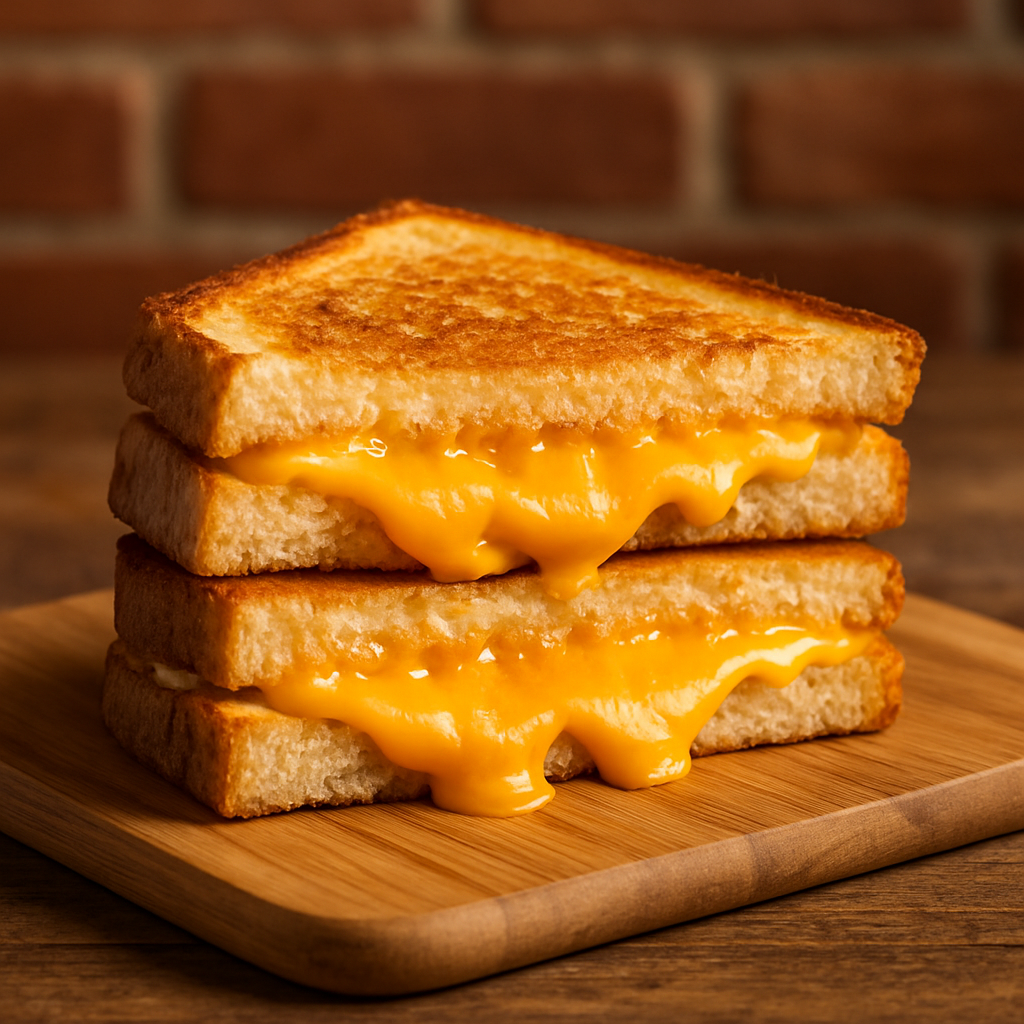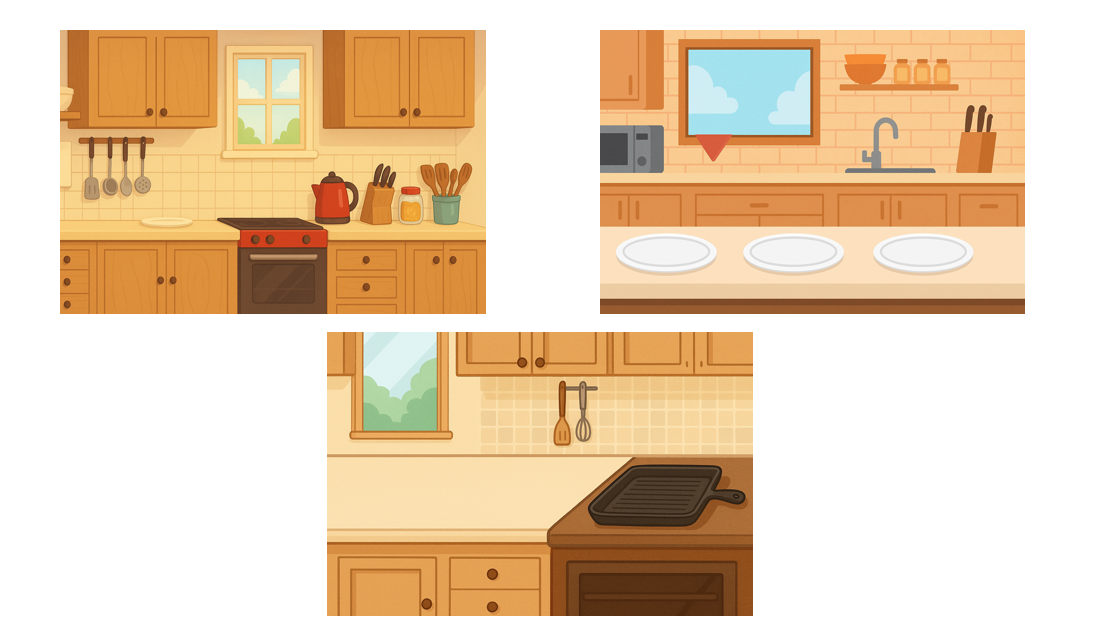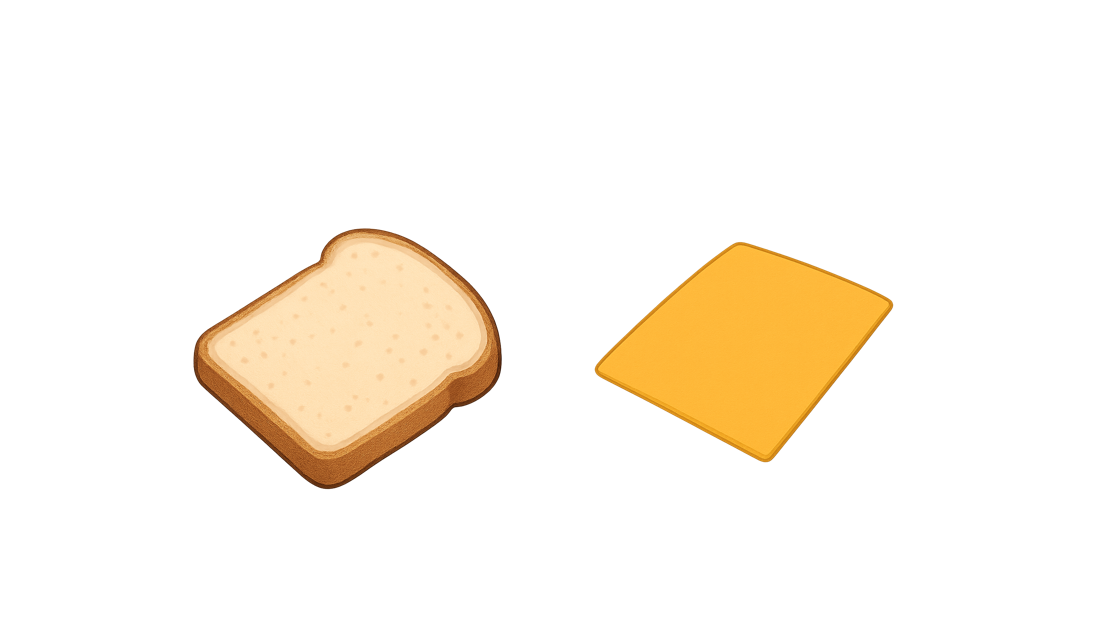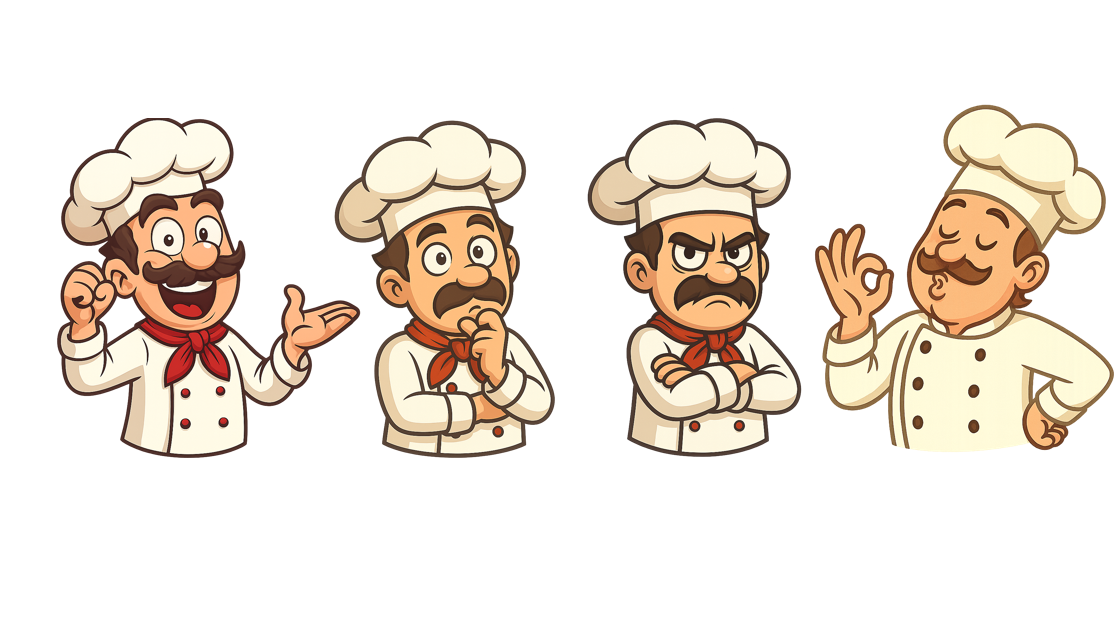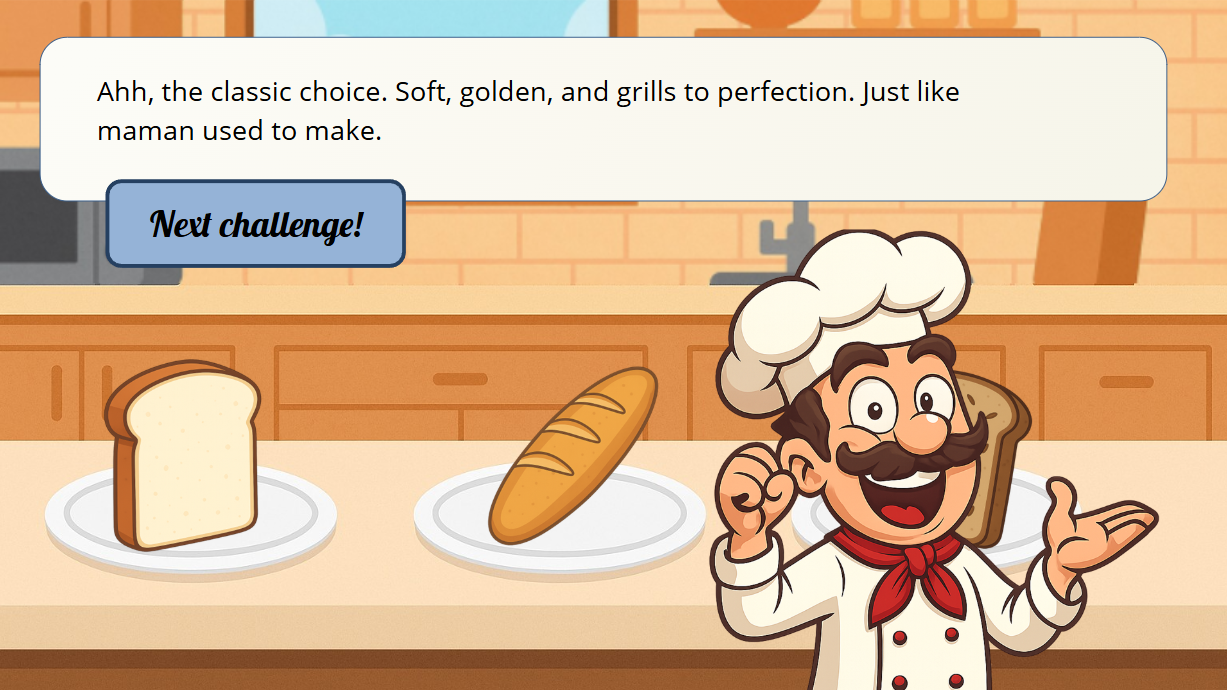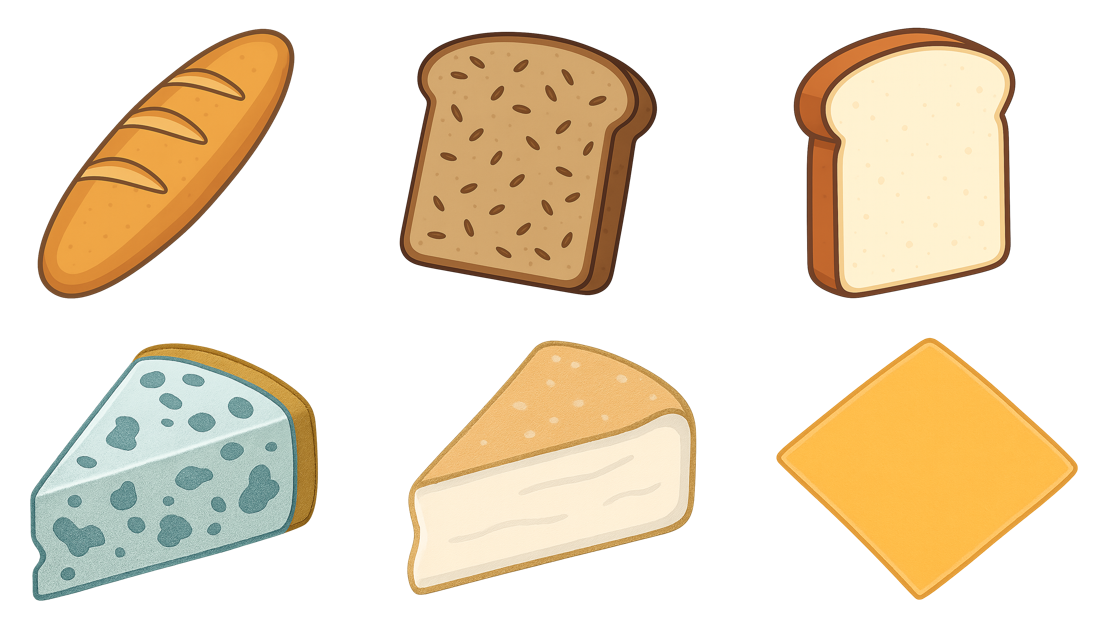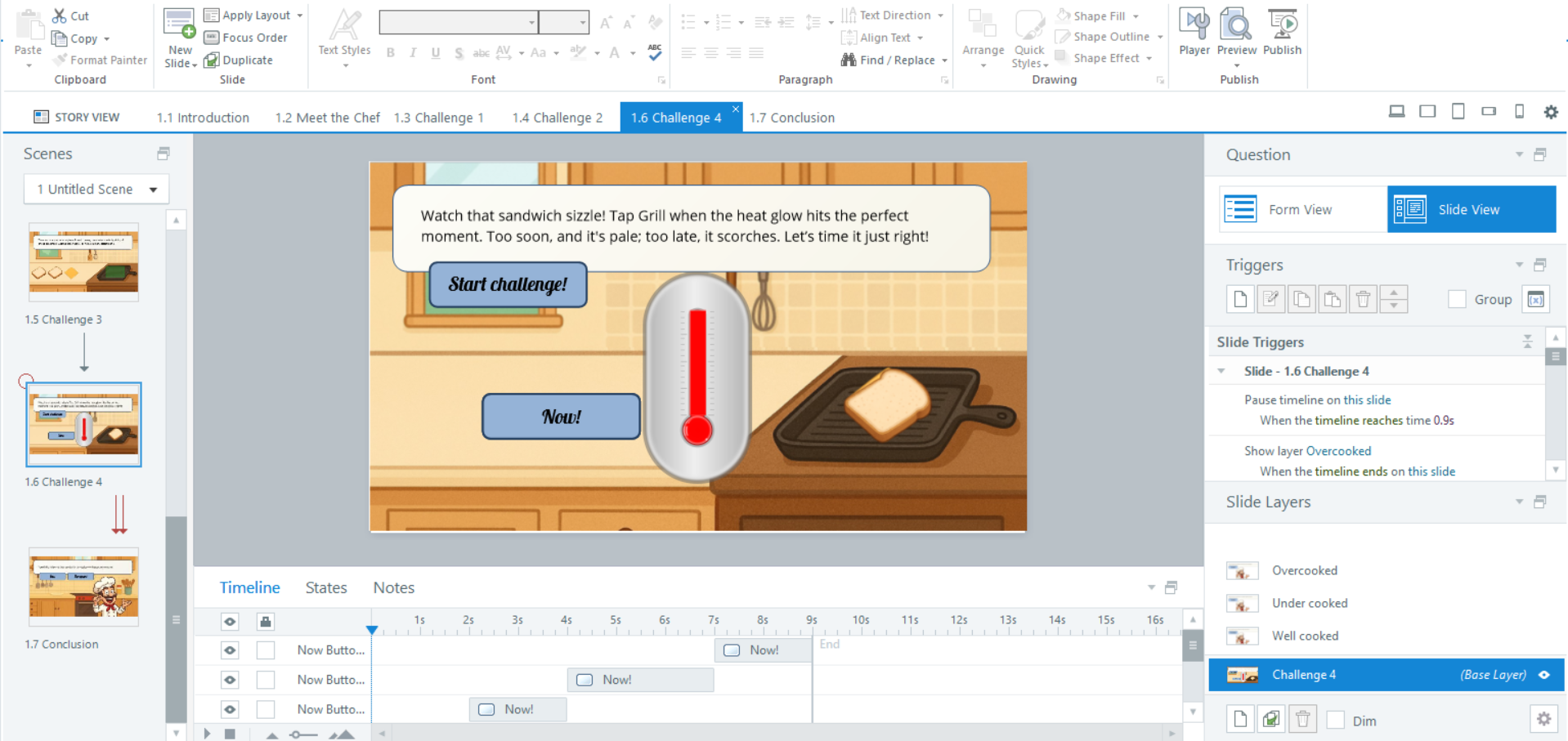Grilled Greatness:
A Tasty Take on Scenario-Based Learning
This light-hearted Storyline challenge was more than a cooking lesson—it was a demonstration of how even the simplest task can become an engaging, interactive learning experience when grounded in strong instructional design principles. The project was designed to last, inspire, and change—showcasing how effective design can elevate learning far beyond static slides or text-heavy instructions.
Audience: Chefs and sous chefs working in fast-paced, high-volume environments within large corporate or institutional kitchens.
Responsibilities: Instructional Design, Storyboarding, eLearning Development, Visual/Graphic Design
Tools Used: Articulate Storyline 360, Figma, ChatGPT
The Problem
I was challenged to teach someone how to make a grilled cheese sandwich. While the task may sound trivial, the true challenge was to create an engaging, visually appealing, and easy-to-follow experience that could be delivered online. The initial direction leaned toward static slides and written descriptions—something PowerPoint could easily do. But I knew there was a better way.
The Solution
Drawing on what I learned, I reframed the challenge: rather than simply tell people how to make a grilled cheese, why not show them—and let them do it?
I created an interactive, cartoon-style learning experience that took learners through a fun, story-driven journey guided by a pun-loving chef. Each step involved visual and kinesthetic engagement, from dragging and stacking ingredients to timing the perfect grill for optimal crispiness. Learners receive immediate feedback—humorous when wrong, celebratory when right—anchoring memory through both emotion and action.
This solution was:
Designed to Last – By turning a procedural task into a playful challenge, the experience reinforces correct steps through repetition, feedback, and humour—making it stick.
Designed to Inspire – The stylized visuals, character-driven guidance, and game-like pacing captivate learners and keep them curious.
Designed to Change – The interactive approach transforms how learners engage with even the most basic topics, challenging assumptions about what “simple” learning looks like.
My Process
Within a five-hour sprint, I:
Reframed the learning goal into a story-based experience
Used ChatGPT to co-write the script and generate instructional flow
Designed cartoon visuals to match the project’s tone
Created interactive layers, triggers, and feedback logic in Storyline
Tested timing mechanics to mimic real-life decisions (e.g., undercooked vs. burned sandwich)
The project simulates real-world decision-making using simple drag-and-drop mechanics and timed challenges—activating motor memory while injecting fun and feedback into every step.
Results and Takeaways
This bite-sized project may seem playful, but it reflects serious design thinking and technical execution under time constraints. It also reinforces that creativity, not complexity, often drives the most memorable learning.
Financial Value:
This template can be reused across industries to demonstrate procedures quickly and effectively—saving development time while engaging learners.
Strategic Value:
It models how to turn even the simplest task into a behaviour-changing experience, showcasing scalable, repeatable design principles.
Personal Value:
The project inspires other instructional designers by proving that storytelling, humour, and interaction can elevate even the most routine topics—and be built fast.


